The mere fact that the ram
"magnified himself"
(RV) tells us this ram was a loser.
And sure enough, as the story unfolds, Daniel introduces a mean he-goat, a billy-goat.
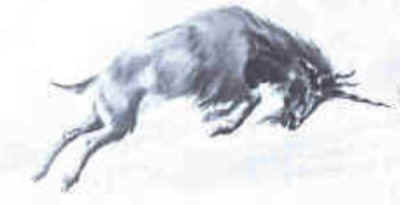
He-Goat = Grecia
"...A
male goat [he-goat] came from the west across
the face of the whole earth, without touching the ground.
And the goat had a conspicuous
horn between his eyes.
"He came to the ram with the two horns,
which I had seen standing on the bank of the canal
[river], and he ran at him in his
powerful wrath.
"I saw him come close to the ram, and
he was enraged against him and struck the ram and broke his two horns.
And the ram had no
power to stand before him, but he cast him down to the ground and trampled on him.
And
there was no one who could rescue the ram from his power.
"Then the
goat [he-goat]
became exceedingly great; but when he was strong, the great horn was broken, and instead of it there
came up four conspicuous horns toward the four winds of heaven."
Daniel 8:5-8 (ESV) |
As soon as we read that this he-goat
"magnified himself" (RV) exceedingly, it
indicates it will not last. Nothing that magnifies itself will last. Just as the ram
representing Medo-Persia with its two horns fell before the he-goat of Greece under the
one horn Alexander the Great, so the Grecian empire later became fused into the Roman
empire. Consequently we read a little horn emerged and "a king of
fierce ["bold"ESV]
countenance" whose power would be great and "by his cunning he shall
make deceit prosper under his hand, and in his own mind he shall magnify himself."
(Daniel 8:23-25)
This later "a king of
fierce ["bold"ESV]
countenance" was
tougher than all, but because he magnified himself he would be broken as well.
The fall of that false religious system was forecast in these words,
"...and he shall be brokenbut
by no human hand." (Daniel 8:25,
ESV) All
powers that magnify themselves shall all be broken. Yes, even if it requires a hand
stronger than human, their pride guarantees their destruction. So, in this quick scenario
we are shown the end of all those powerful beasts and kings who magnified themselves.
Pride goes before destruction.
This "king of fierce ["bold"ESV] countenance" represented the great line
of religious princes who have reigned through the centuries, which cannot be broken by any
power on earth. Satan supports it and will not allow this antichrist ruler to fall until
the King of Kings arises to destroy it. But it will be destroyed.
Even the Devil in his appointed time will be destroyed. He, too,
magnified himself saying, "I will be like the Most High." Yet
he will end up as ashes on the earth.
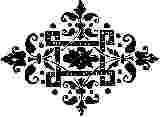
The Lion and the Lamb
Our brief review of Daniel’s prophecy casts
a shadow before the lamb. The lesson is enlarged in the Revelation of Jesus Christ. There
we are introduced to the Lamb, "Arnion"occurring 28 times,
referring to Jesus. Only once is Jesus referred to as the "Lion of the tribe of
Judah." (Revelation 5:5)
We are told that the Lion of the tribe of Judah prevailed to open
the book sealed with seven seals. The reason the "lion" is mentioned here is to
fulfill the Old Testament scriptures.
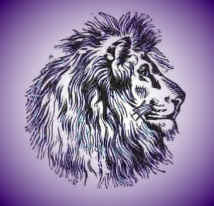
The "lion" confirms Genesis
49:9,10 which reads:
"Judah is a lion’s
cub; from the prey, my son, you have
gone up. He stooped down; he couched as a lion and as a lioness; who dares rouse him?
"The scepter shall not depart from Judah, nor the ruler’s
staff from between his feet, until tribute comes to
him [until he comes to whom it belongs]; and to him shall be the
obedience of the peoples." [ESV]
Genesis 49 was Jacob’s prophecy. |
But in Deuteronomy 33:20 and 22, Moses speaks of two
other tribes as lions.
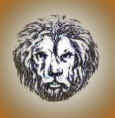
1. "Gad
... dwelleth as a lion,
and teareth
the arm with the crown of the head." |
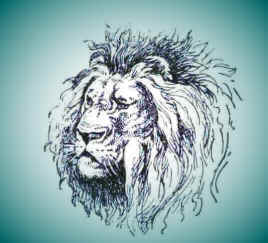
2. "Dan is a
lions whelp: he shall leap from Bashan." |
But in Revelation we learn it is not Gad or Dan that is the triumphant
lion. Clearly, the lion of the tribe of Judah prevails to open the scroll, sealed with
seven seals.
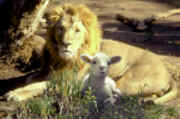
Jesus is only once referred to as a
lion in the New Testament, whereas 28 times in Revelation Jesus is referred to as a lamb.
Now that is a very interesting fact.
Why not a little more of the lion
figure and less of the lamb? After all, one of the attributes of Jehovah is the face of a
lion, which means it can be used to describe holy and good qualities. But, for whatever
reason, it is not the way our Lord Jesus is most often described. |
Why the lamb symbol? Lambs are not known to be smart,
nor strong, nor wise, nor rich, nor glorious, nor powerful. But the Lamb of which we speak
is an anomaly of a lamb. We read,
"Worthy is the Lamb that was slain to receive power, and
riches, and wisdom, and strength, and honor, and glory and blessing." (Revelation
5:12)

Qualities of the Lamb
We must not ever underestimate the qualities of this Lamb. This Lamb
is endowed from the One who sits upon the throne with all the resources of God Almighty.
This Lamb is worthy to receive such resources and glory. We must forget about all the
images we may have had of a harmless and weak and adorable little creature. This Lamb
whereof we speak is not to be petted and fed and coddled like an ordinary lamb.
This Lamb has one unique qualitythe heart of a servant. In one
sense, no one took Jesus’ life from him. He gave ithe sacrificed it freely for
those he loved. He came not to be ministered unto, but to minister and to give his life
as a ransom for all. He came not seeking anything for himself, to use men for his own
purposes. He came to seek and to save that which was lost. He came not to glorify himself,
but rather to glorify his Father in heaven. This is the heart of the Lamb.

The Lamb Is Rejected
The world is not prepared to receive the Lamb at his second advent
any more than they were in the first advent.
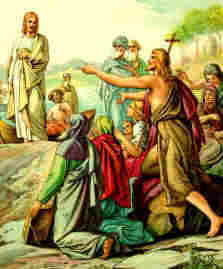
When John the Baptist proclaimed
before the nation of Israel, "Behold the Lamb of God
which taketh away the sin of the
world" (John 1:29), you would think that the people who had wearied themselves
sacrificing lambs for centuries would be ready to hail a Lamb that only needed to be
sacrificed once for alla Lamb that could forever take away sin and end forever the
tiresome repetition of sacrificial lambs that could never take away sin, that could never
purge the believer.
Israelites at the first
advent were not seriously interested in having one deal with their sin. More importantly, they wished for one
to deal with Rome. |
Oh, if Jesus had come on a white charger ready to
take on Rome, how gladly Israel would have hailed him and rallied to his side, especially
if he could use his miracle-working power to bloody Rome. Yes, they might have received
the Lamb of glory, described as "King of Kings and Lord of Lords."
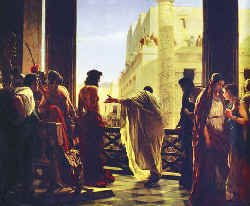
Strangely, here was a nation specially
trained for nearly 2,000 years in types and shadows and prophecy to receive a sacrificial
Lamb as their Messiah.
When the moment arrived to receive their Lamb and King, they crucified
him. John truly realized this, saying to Israel,
"There standeth one among you, whom ye know not." How sad!
(John 1:26) |
We are told that we have an education problem in this
country. But here we see that God spent so many centuries to prepare a people to receive
their Messiah, and when the appointed moment came, the examination time, the nation
flunked the test. Only a few were prepared to receive Jesus as their Messiah. Why did they
fail? How could a whole nation blank out on the test? How could they be so blind, so dull,
as not to recognize this one sent of God?
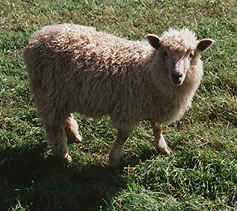 |
We see now that they were not
prepared for their Messiah to be a sacrificial Lamb.
Why that should take them by surprise, in view of all the lambs they slew
yearly, we may find hard to believe.
|
If only Jesus had lived up to their expectations! In
brief moments, perhaps he did. When he healed the sick, raised the dead, fed the
multitudesthis was what they were looking for. Someone who could do something
materially. If he had only improved this type of performance, they would not only proclaim
him King, but they would have followed him. Supposing he organized them into an army to
throw off the shackles of Rome. Imagine having a general who could say to his soldiers,
"Don’t worry when you go on the battlefield. If anyone is hurt or wounded or
even killed in battle today, I will heal their wounds or raise the slain from the
dead." What an invincible army that would be! The wounded and slain would be back in
battle on the morrow. Additionally, if he could call down fire from heaven on the enemies,
how quickly and easily he might have subdued Rome.
But how different was their Messiah. They could reject him and
disbelieve him at will
with impunity! They could renounce him and call him a
wine-bibber and a glutton, a friend of publicans and sinners. They could throw stones at
him. Finally, they could strike him, spit upon him and crucify him. Who needed a leader
such as this? They dared not treat their own religious leaders thus. They dared not treat
the Roman rulers thus. A sacrificial lamb was not what they wanted.
Ah, so when the golden moment came to Israel, their finest hour,
their appointment with destiny, they rejected the One sent of God. "He came
unto his own, and his own received him not." (John 1:11) The tragedy is
numbing.
Click to go to the following:
Topical Studies on:
The Anomaly of the Lamb Part I - Part II
Topical Study Home Page - Chapter Study Home Page
- Sinaitic Manuscript - Questions - Glossary.
E-Mail
Day7000@sbcglobal.net with comments.
Copyright 2001 John Class